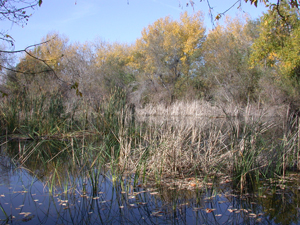 |
|||||||||||||||||
|
|||||||||||||||||
Sepulveda Basin Wildlife Reserve Click HERE for a local trail map of the Sepulveda Basin Wildlife Reserve |
|||||||||||||||||
The South Reserve (south of Burbank Blvd., bounded by the Dam and the Los Angeles River) was developed as a revegetation experiment in 1979 by the Army Corps of Engineers and features a small man-made pond and the reach of Haskell Creek that flows into the Los Angeles River. |
|||||||||||||||||
The development of the North Reserve began in 1988 with the development of an 11-acre lake with an island and wildlife viewing stations east of Haskell Creek. In 1999 the Reserve was renovated and restrooms and an amphitheater were built in the more formal “park” area surrounded by lawns near the entrance and parking area. This eastern portion is the most developed and most highly managed. The northernmost portion ends at the unnamed paved road leading into the Reserve from Woodley Ave and goes north up to the archery range. In 1999 the middle portion was added to the Reserve with the purpose of putting Haskell Creek in the center of the Reserve (not at the edge as it had been when the Wildlife Reserve was first established in 1988). Two bridges were built connecting the eastern portion to the middle portion, and a perimeter trail was built with the idea to leave the largest unfragmented portion possible in the middle. Valley and coast live oaks were planted along the trail. The area west of Woodley Avenue was also added to the Reserve in 1999. This area is not for hiking, as it is directly under the “fly zone” of the model airplane fields along the west edge of the east portion. The area is managed by eradicating non-native invasive weeds and trees. |


